Abstract
To establish a convenient method for decontaminating bioclean rooms, the effect of ozone at 80 mg/m3 for 72 h was compared with formaldehyde vaporization at an initial concentration of 150 mg/m3 with a gradual decrease to 20 mg/m3 during 72 h. Ozone was found to be inferior to formaldehyde in activity. When the bioclean room was decontaminated twice with ozone, the mean colony count per 10 cm2 was decreased to about the same level as when formaldehyde was used. Ozone had a strong caustic effect upon rubber materials. Despite these disadvantages, ozone decontamination was demonstrated to be superior to formaldehyde vaporization because of convenience, insignificant inhalation of the disinfectant by the hospital staff, and very rapid expulsion of the gas after ventilation. Because the disadvantages of ozone can be easily controlled, this study suggests that ozone decontamination is a promising method for maintaining bioclean rooms.
Full text
PDF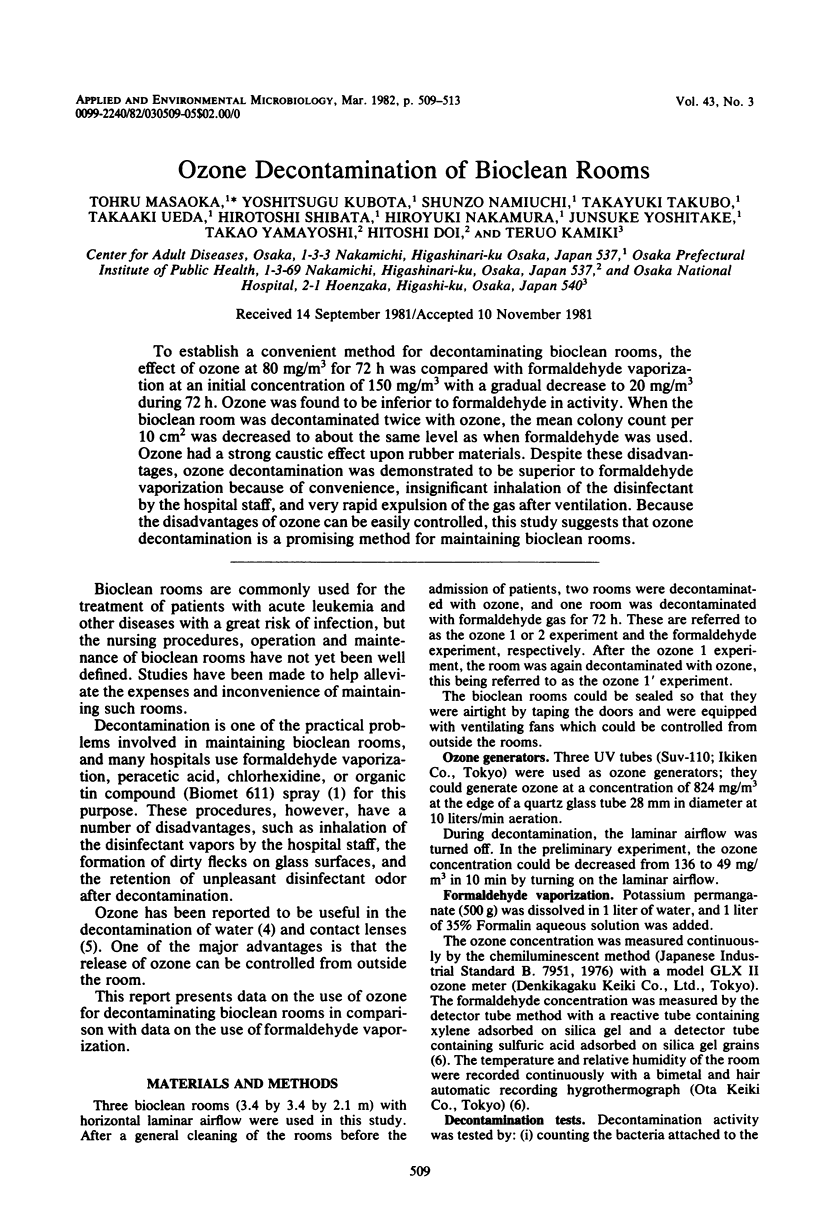
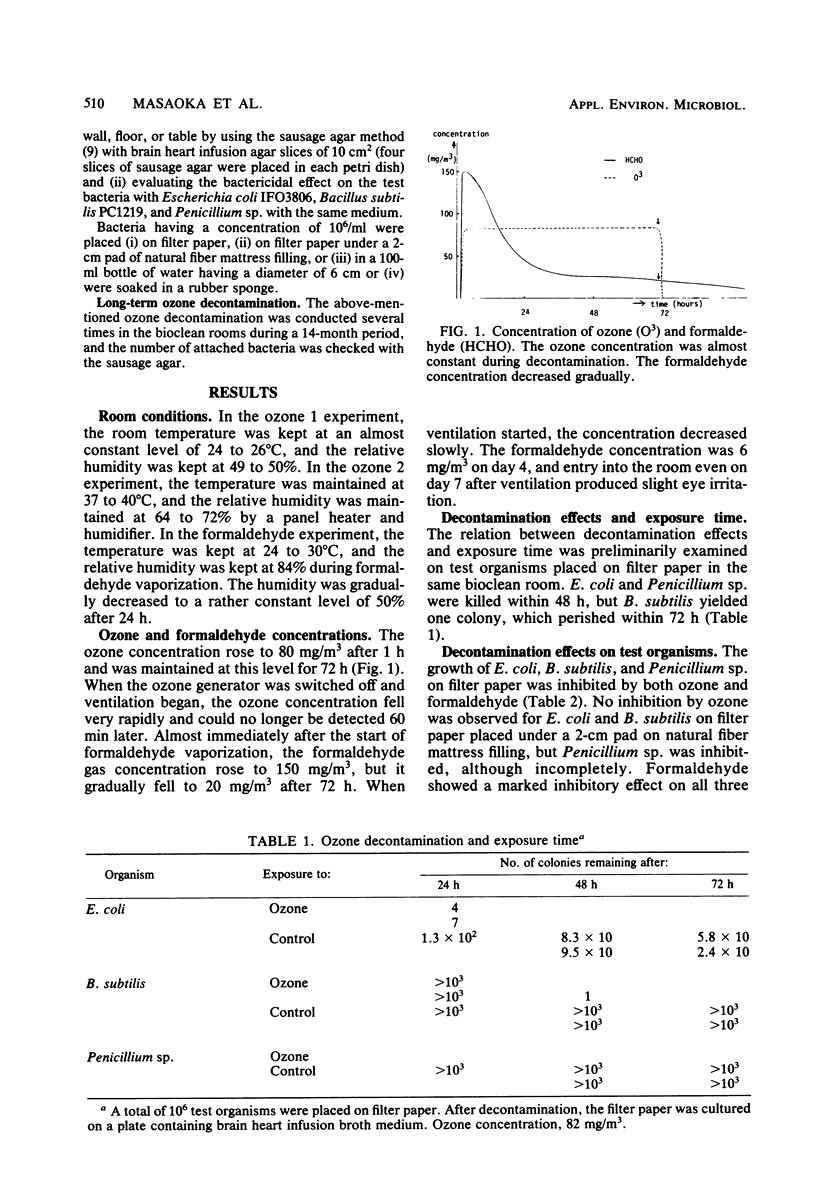
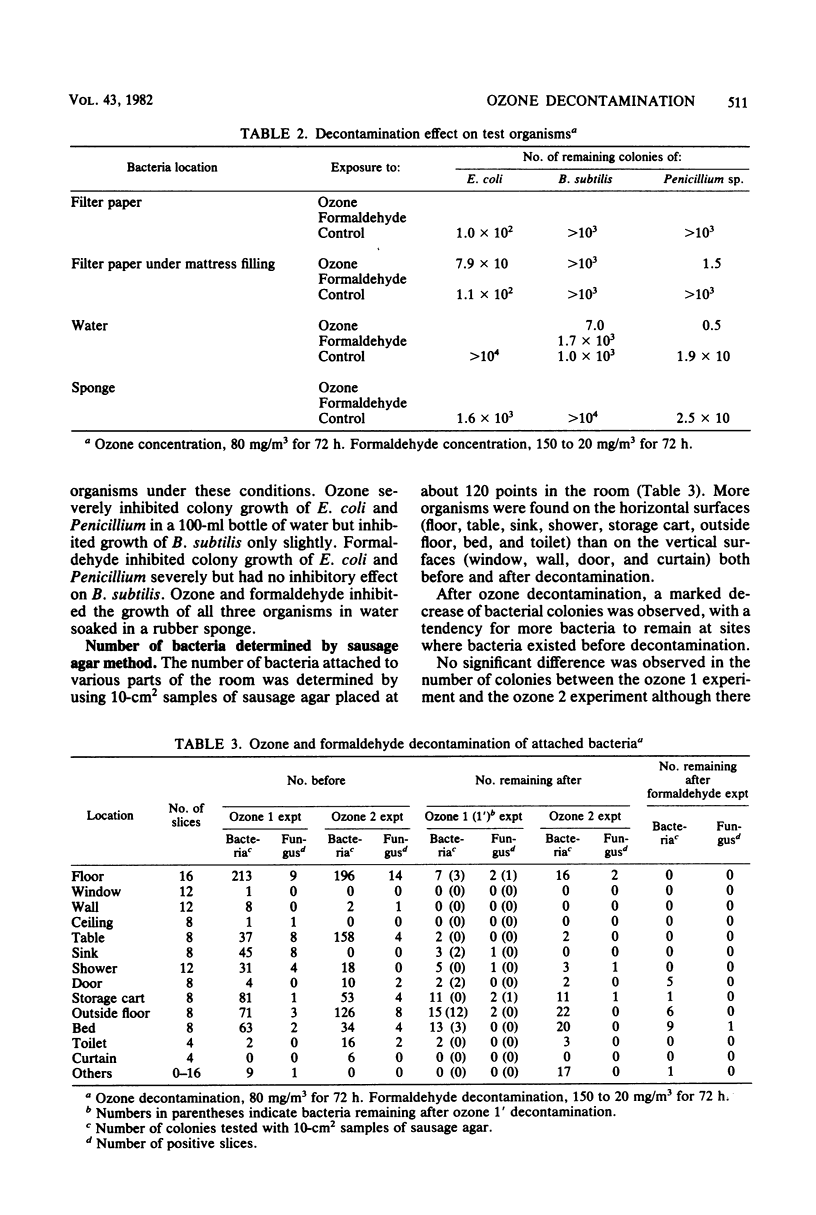
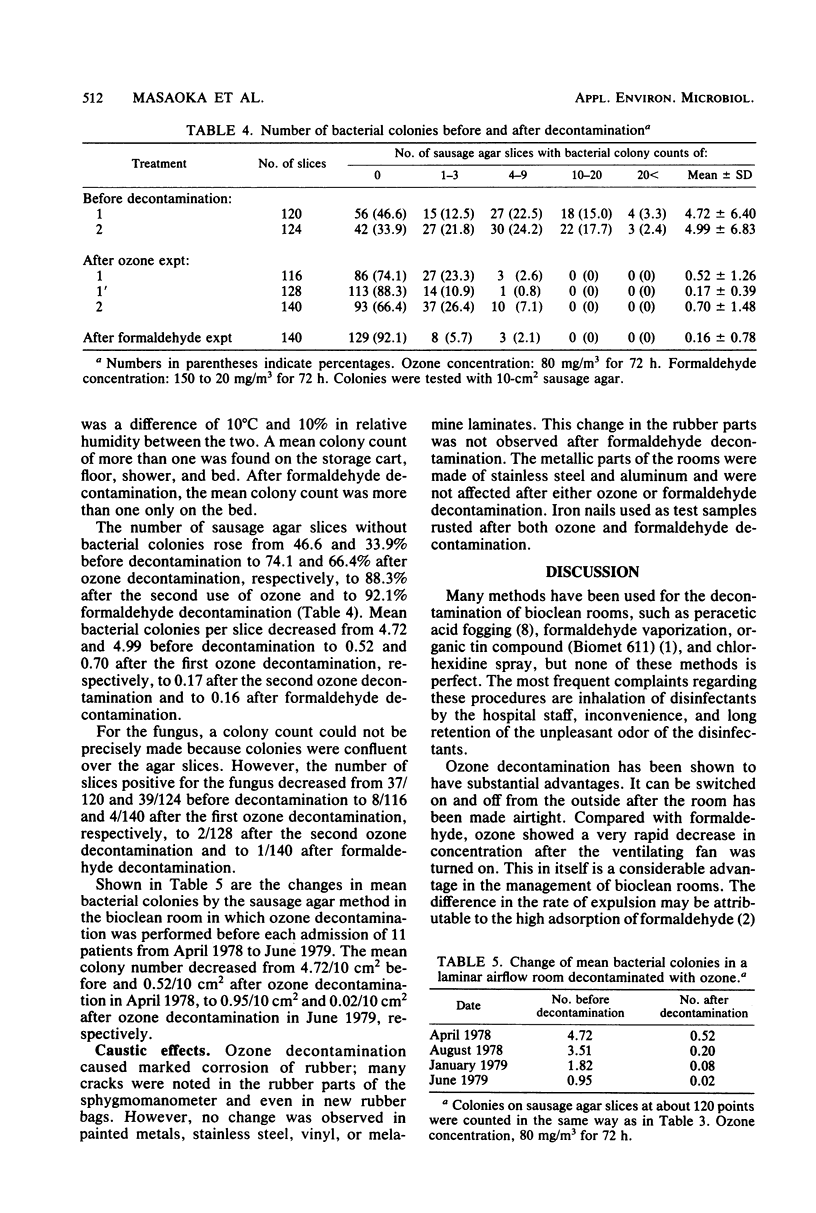
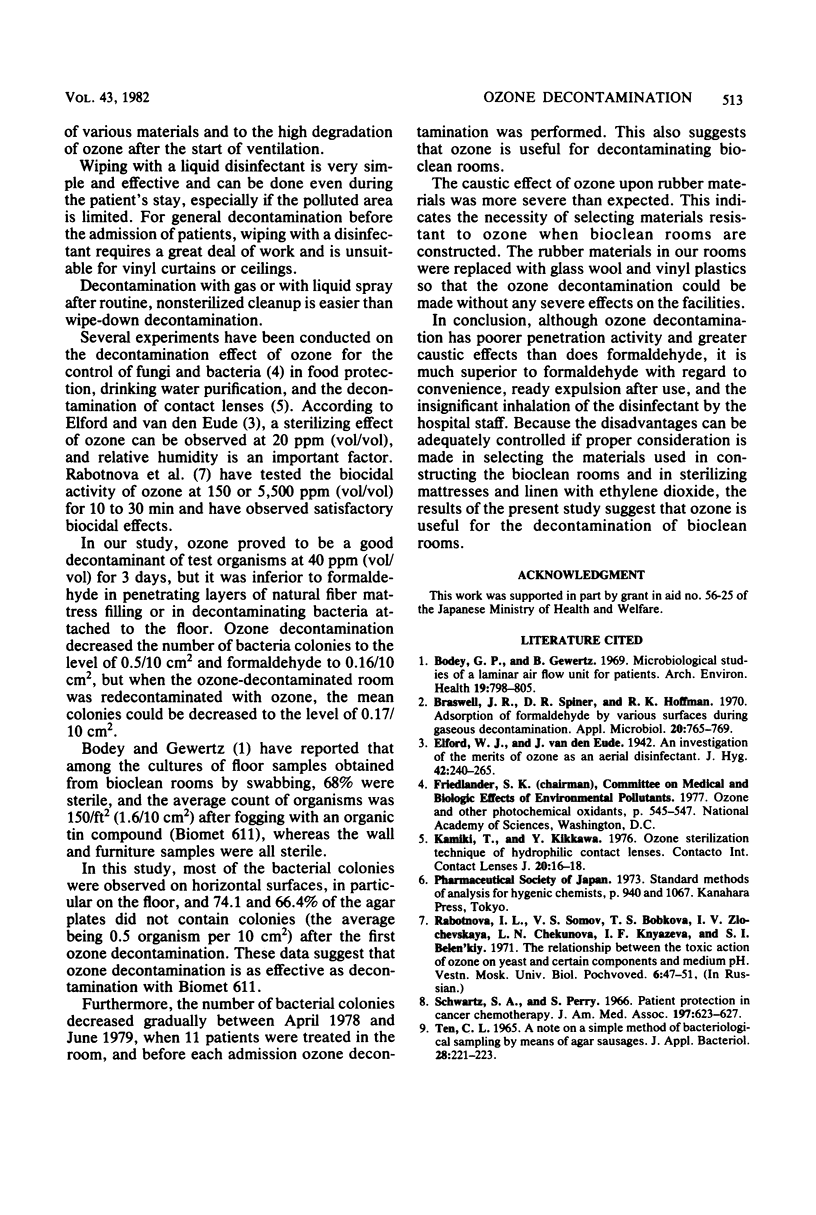
Selected References
These references are in PubMed. This may not be the complete list of references from this article.
- Bodey G. P., Gewertz B. Microbiological studies of a laminar air flow unit for patients. Arch Environ Health. 1969 Dec;19(6):798–805. doi: 10.1080/00039896.1969.10666933. [DOI] [PubMed] [Google Scholar]
- Braswell J. R., Spiner D. R., Hoffman R. K. Adsorption of formaldehyde by various surfaces during gaseous decontamination. Appl Microbiol. 1970 Nov;20(5):765–769. doi: 10.1128/am.20.5.765-769.1970. [DOI] [PMC free article] [PubMed] [Google Scholar]
- Schwartz S. A., Perry S. Patient protection in cancer chemotherapy. JAMA. 1966 Aug 22;197(8):623–627. [PubMed] [Google Scholar]
- ten Cate L. A note on a simple and rapid method of bacteriological sampling by means of agar sausages. J Appl Bacteriol. 1965 Aug;28(2):221–223. doi: 10.1111/j.1365-2672.1965.tb02146.x. [DOI] [PubMed] [Google Scholar]


